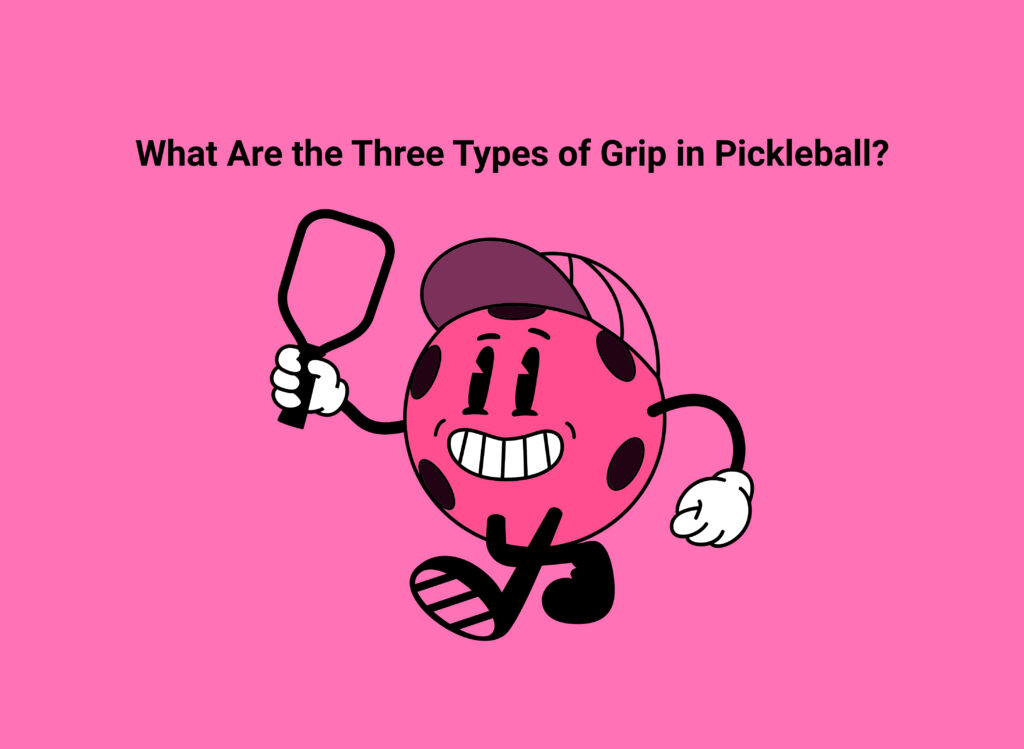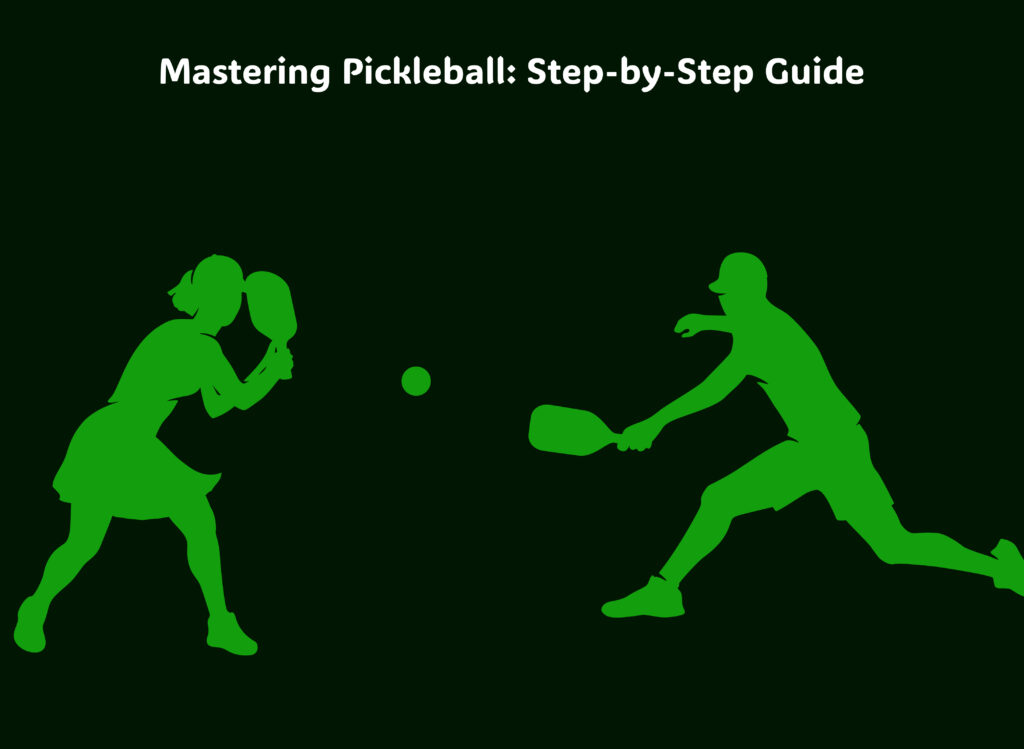- The Continental Grip (a.k.a. “The Hammer Grip”)
- The Eastern Grip (Forehand-Focused Control)
- The Western Grip Grip in Pickleball (Heavy Topspin Power)
- Which Grip Should You Use?
- Final Thoughts: Mastering Your Grip in Pickleball
The three main types of grip in Pickleball that players use are the Continental grip, the Eastern grip, and the Western grip. Each has its own feel, strengths, and suitability depending on your playing style. Grip is one of the most important aspects of the game that often gets overlooked—especially by beginners who are more focused on footwork or serving. Yet, how you hold your paddle directly affects your ability to control spin, power, placement, and overall shot consistency.
Just getting started at a local UK club or levelling up for competitive play, knowing these grip types—and when to use them—can elevate your overall performance. Many experienced players switch between grips during a match to suit different strokes and situations. Let’s explore each grip in detail and how it impacts play at every skill level.
The Continental Grip (a.k.a. “The Hammer Grip”)
The Continental grip is one of the most widely used grips in pickleball, particularly among beginners and all-around players. It’s called the “hammer grip” because you hold the paddle like you would hold a hammer—your hand wraps around the handle with the knuckle of your index finger aligned with the paddle’s edge.
Advantages of the Continental Grip:
✅ Works well for both forehand and backhand shots without needing to switch grips.
✅ Ideal for volleying at the net, as it provides fast response and paddle stability.
✅ Useful for serving, dinking, and blocking, making it a reliable, all-purpose grip.
✅ Encourages a neutral paddle face, reducing mishits for new players.
It’s often the first grip taught in coaching sessions across the UK, especially in community clubs, because it makes transitioning between shot types easier. However, players looking to add more aggressive topspin or angle control may eventually outgrow this grip or adapt it for specific shots.
🔥 Key takeaway: The Continental grip is the most versatile, making it ideal for beginners and players who want one reliable grip for nearly all strokes.
The Eastern Grip (Forehand-Focused Control)
The Eastern grip is a favourite among intermediate players who want more power and control on the forehand side. To form the Eastern grip, place the base knuckle of your index finger on the paddle’s face (like shaking hands with your paddle). This grip allows for a natural paddle angle during forehand strokes, especially drives and passing shots.
Advantages of the Eastern Grip:
✅ Provides more spin and topspin than the Continental grip, especially on forehands.
✅ Great for aggressive drives, third shot drops, and topspin serves.
✅ Helps players achieve a better paddle face angle when striking at lower ball heights.
✅ Easier to adjust for depth and speed control on aggressive shots.
While it shines on the forehand, it’s slightly weaker on the backhand side. Players using this grip may struggle with fast transitions at the net, where rapid backhand blocks are required. Still, many players in UK pickleball leagues and competitive doubles settings use this grip for its forehand dominance, especially when looking to set up offensive plays from the baseline.
🔥 Key takeaway: The Eastern grip offers more spin and power for aggressive forehands, making it a go-to choice for intermediate players who are dialling in shot accuracy and variety.
The Western Grip Grip in Pickleball (Heavy Topspin Power)
The Western grip is less commonly used in pickleball but has gained popularity among players who come from a tennis background. It’s particularly suited for maximising topspin on forehand shots. To use the Western grip, rotate your hand further under the paddle handle so your palm faces more upward—this opens the paddle face and encourages a brushing, low-to-high swing path.
Advantages of the Western Grip:
✅ Generates the most topspin of all three grips—great for dipping shots that drop quickly.
✅ Effective for looping third shot drops, high-arching dinks, and deep returns.
✅ Can be used to attack aggressively with height and bounce, particularly in windy or outdoor conditions.
However, this grip has significant limitations. It’s not ideal for quick volley exchanges at the net, as it makes the paddle less stable on backhand blocks and fast resets. Players using a Western grip may also find it hard to adapt to low balls or shots near the feet, as the paddle face tends to close too much.
In the UK’s recreational pickleball scene, it’s rare to see players fully commit to a Western grip—but it’s growing in use among young, tennis-savvy players who want to bring heavy spin into the sport. It can also be a great secondary grip for situational play.
🔥 Key takeaway: The Western grip is a specialist tool for players who prioritise topspin and aggressive play, but it requires high skill and isn’t as versatile as the Continental or Eastern grips.
Which Grip Should You Use?
The best grip often depends on your playing style, experience level, and personal comfort. Most coaches in the UK recommend starting with the Continental grip to learn fundamentals and then exploring the Eastern or Western grips as your game evolves. Here’s a quick reference:
| Grip Type | Best For | Skill Level | Strengths |
|---|---|---|---|
| Continental | All-round consistency | Beginners to Advanced | Net play, dinks, resets, blocks |
| Eastern | Forehand power and spin | Intermediate+ | Drives, third shots, control |
| Western | Topspin-heavy aggressive baseline play | Advanced | Heavy spin, high-bouncing shots |
Switching between grips mid-match is not uncommon at higher levels, especially when returning serves, countering aggressive drives, or adjusting to wind conditions on outdoor courts.
🔥 Key takeaway: Try each grip and see what complements your natural swing and positioning style. Comfort and consistency are more important than forcing a “pro” grip.
Final Thoughts: Mastering Your Grip in Pickleball
Understanding the three main types of grip in pickleball—Continental, Eastern, and Western—can help players at every level develop a more versatile and effective game. Whether you’re learning the basics at your local UK club or competing in a national tournament, how you hold the paddle can make all the difference in shot control, confidence, and tactical execution.
Key Takeaways:
✔ The Continental grip is the most versatile and perfect for learning the fundamentals.
✔ The Eastern grip favours aggressive forehands and better spin for intermediate players.
✔ The Western grip is for spin-heavy, offensive players but requires advanced skill.
✔ Experiment with grips to match your natural game and preferred style of play.
✔ Pay attention to shot feel, consistency, and paddle angle when choosing your grip.
By mastering your grip, you’re not just holding the paddle better—you’re holding the key to smarter, sharper, and more strategic pickleball.
👀 Enjoyed this read? Fancy levelling up your game even more? Keep reading Dink Quest for the best pickleball tips, drills, and news in the UK!
🎯 Check out these popular posts next:
📬 Subscribe to the Dink Quest newsletter to Stay in the Loop and be the first to get new blog posts, UK pickleball news, tips, player spotlights and exclusive offers
👉 Click here to subscribe now
Get discounts and exclusive offers for Paddles, clothing and accessories from our shop
We’ve got plenty more where that came from! Whether you’re working on your third shot drop, curious about dinking strategies, or just figuring out how to hold your paddle without it flying across the court we’ve got you covered.
👉 Keep reading, keep learning, and keep dinking smart. Let’s grow the game together, one dink at a time. 💚
See you on the court!
The Dinkquest Team UK 🏓



